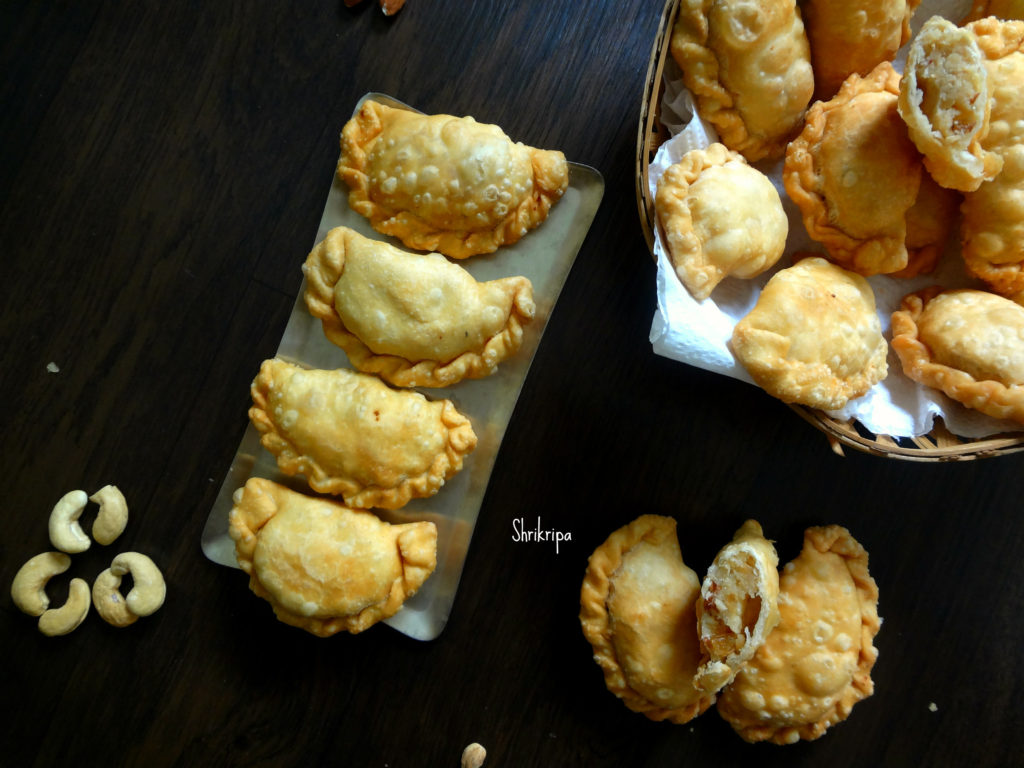Long ago, I mean in and around 2015 I tried the No bake cheese cake with hidden Jamun inside on the event of my hubby’s birthday. I was wondering what to make, and I thought, why not a mix of what he likes? He loves Badam milk and Gulab jamun; so, I thought of combining these two flavours and made a jamun cheese cake and he did wonder about the flavour. The upper layer of almond milk flavour went well with the Gulab jamun and the cheese cake was a very big hit! At that time, my recipes used to publish on Readoo and you can see it over here.
Today, we are celebrating our 20th year of marriage as well as 2nd year of my blogging. So, I thought of improvising my idea and went ahead with the same flavour but baked version as well as non-baked top layer.

To mark the occasion, I made my signature cheese cake flavour with a little additional twist and here is the recipe-
Ingredients:
For the first layer (Crust):
Choice of any crackers biscuits – 1 ½ cup to 2 cups (powdered)
Sugar – 5 to 6 table spoons
Melted butter – 1/3 cup
Gulab Jamuns – Dried (sugar syrup removed)
Method:

-Pre- heat oven at 165°C
-Combine all the ingredients from biscuits powder, sugar and melted butter. It becomes like a wet crumb.
-Take a 9 to 10” spring-form baking dish, press this crumb at the base by using any one of your measuring cups.

-Crumb should be slightly above the base at the edges.
-Before heading towards the second layer, arrange all the Gulab jamuns according to your wish.
For the second layer (Filling):
Cream cheese – 3 tubs (238 grams or 250 grams)
Sugar – 1 ½ cup
Eggs – 4 (separated)
Lemon juice – 1 table spoon
Vanilla extract – 1 tea spoon
Method:

-Mix together Cream cheese, sugar, 4 egg yolks, lemon juice and vanilla.
-In another bowl, beat 4 egg whites until frothy and little stiff as well as creamy.
-Fold egg white with cream cheese and pour the mixture over the first layer/Gulab jamun layer.

-Bake for 45 minutes to 1 hour or until done, in a preheated oven at 165°C.
-When it is done, you will find a raised dome like a structure and 2 to 3 slits at the centre. After switching off the oven, leave the cake inside the oven at least for an hour with the oven door closed.
-After an hour, remove it and chill in the refrigerator by enclosing it in cling wrap, if you are not adding the 3rd layer immediately or proceed for a third layer.
For the 3rd Layer (Glaze):
Milk – 1 ¼ cup
-Veg gelatin -1 tsp
Badam milk – 4 tsps
Custard powder – 1 tsp (vanilla flavour)
Saffron strands – generous amount
Method:
-Dissolve gelatin in ¼ cup of milk.

-Dissolve custard powder, Badam milk powder and add saffron to one cup of milk and start heating.
-When it is hot, add in gelatin added milk and boil for 2 minutes.
-Pour the mixture over the ready cooled cake. When it is set and becomes cool, cover the cling wrap and keep it a refrigerator to cool.

-It needs at least an overnight or 8 hours of cooling. I kept it for 20 hours. It tasted as I was expecting and loved the outcome and it surely made my special day a memorable one.



































